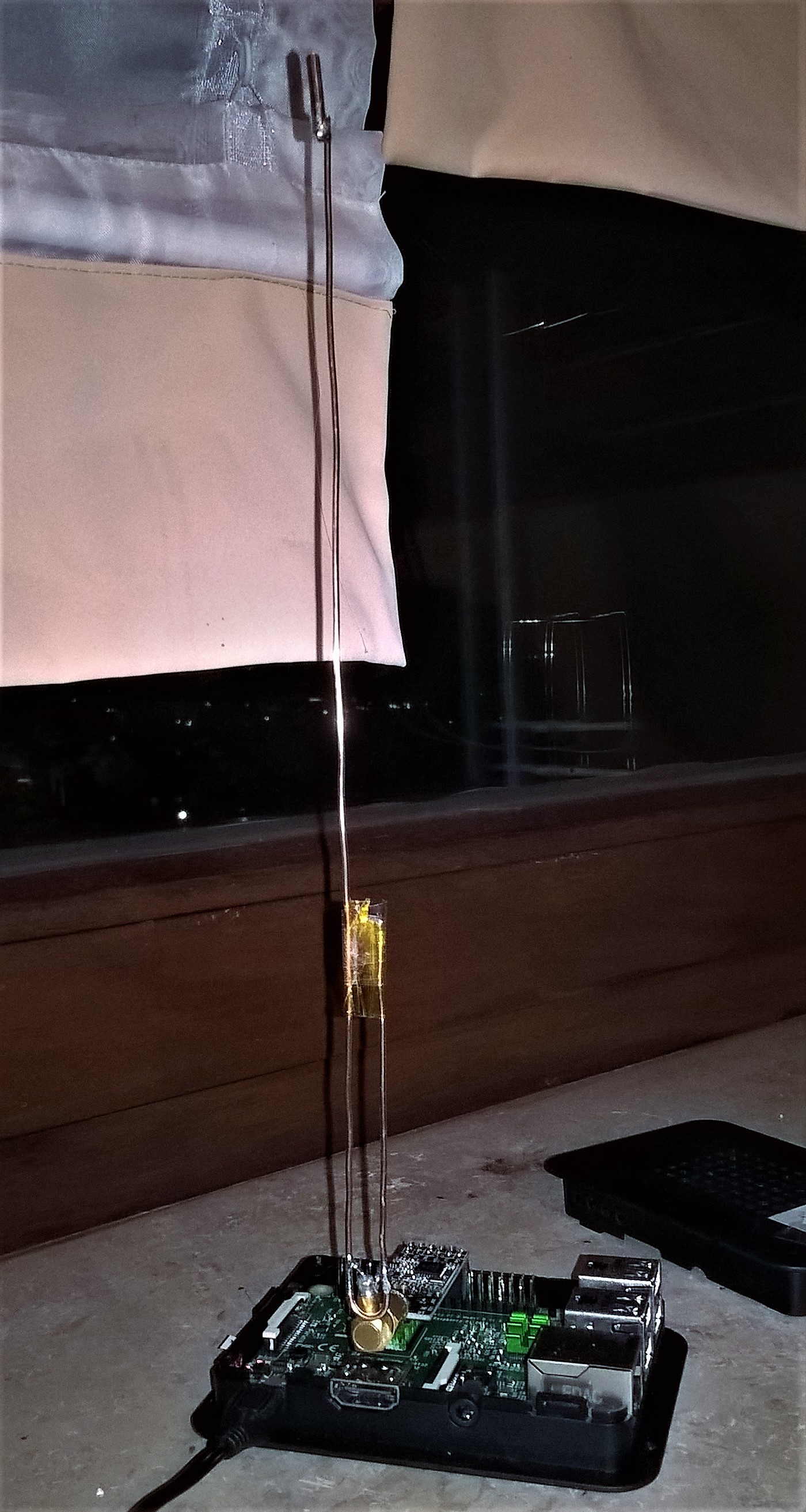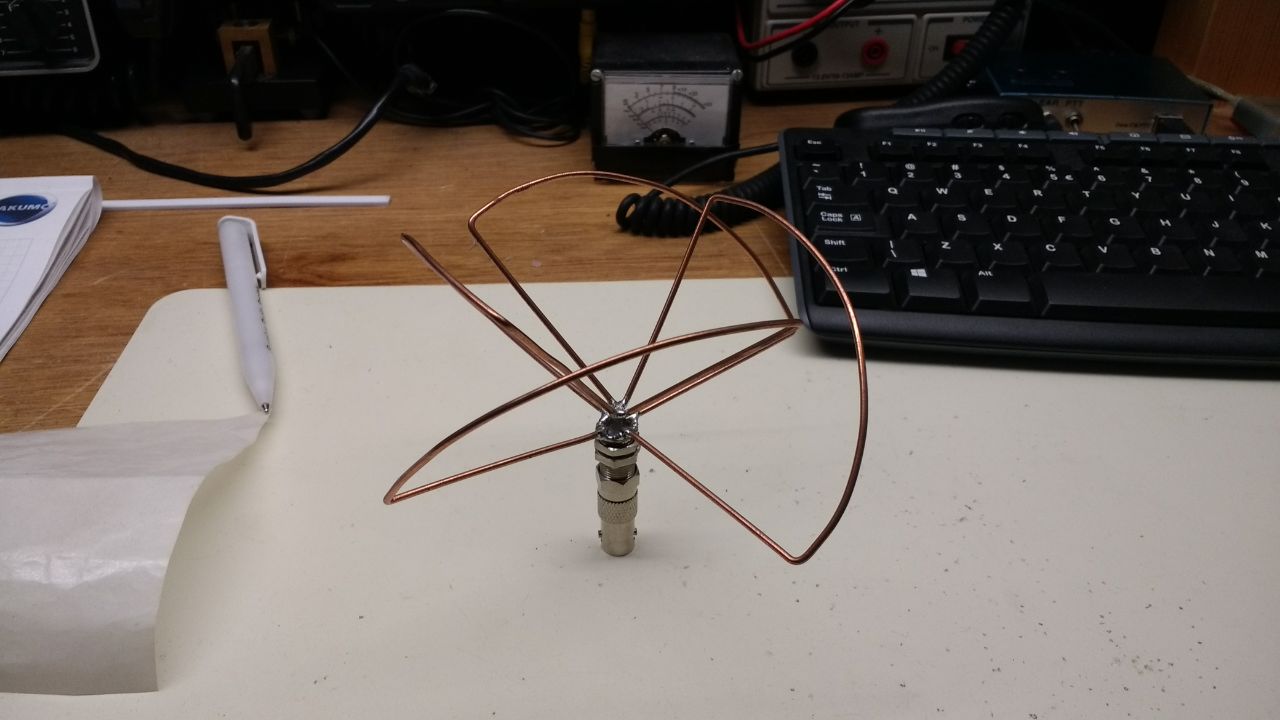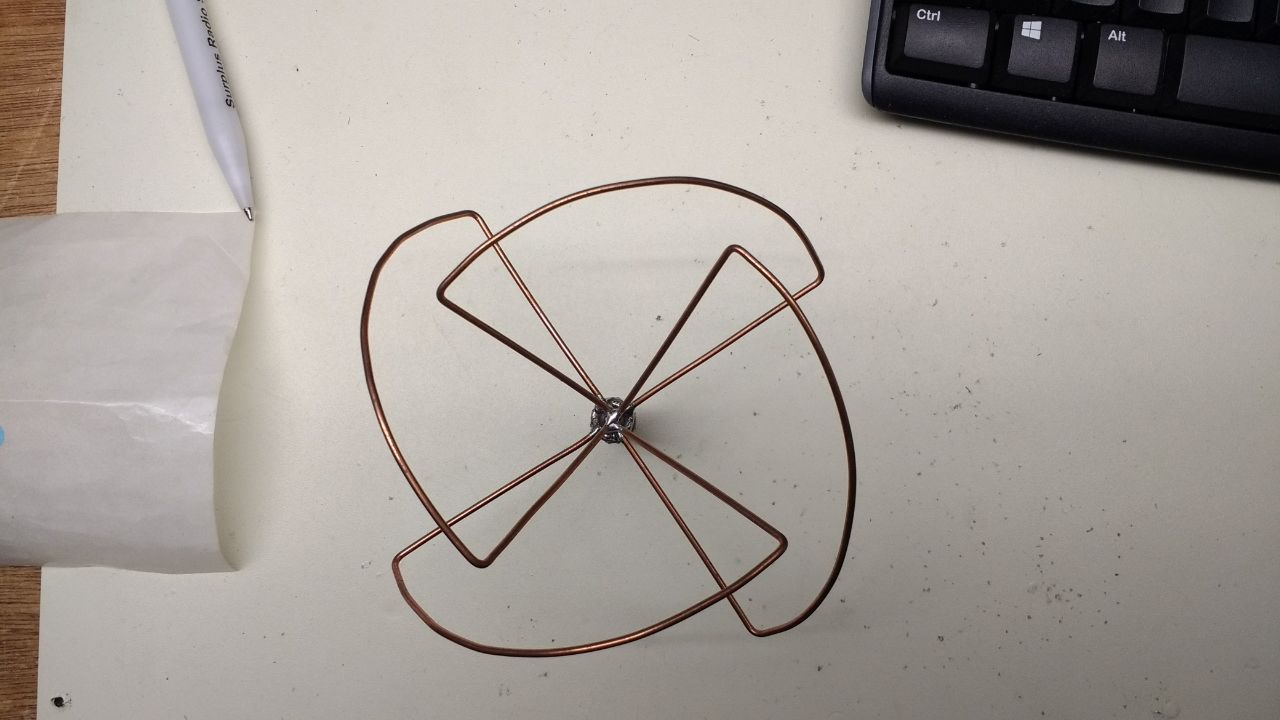After a busy weekend I finally did some antenna measurements.
The J-pole was always one of my favorites. As a student I had not much money to spend on my equipment and not much room to place an antenna so I built a J-pole for 2m to be able to reach our local repeater with my old handheld tranceiver. So when I started my LoRa developments, the J-pole immediately came up as a nice antenna. It’s small, easy to build and does not take much space (read: does not attract too much attention when mounted outdoors).
The antenna works, that’s for sure, but how easy is it to make one in a reproducible way without the need of expensive equipment to tune the antenna.
This is what I built:
It’s a 2mm welding wire, bent around an 8mm drill bit to get the right curve. Three round polycarbonate discs keep it centered in a 16mm plastic tube and a standard SMA cable was cut and soldered to the antenna feed point.
The Antenna is 24.9mm long, the short part 8.3cm and the feed point is at 8mm from the bottom. This gives the following diagram on the network analyzer:
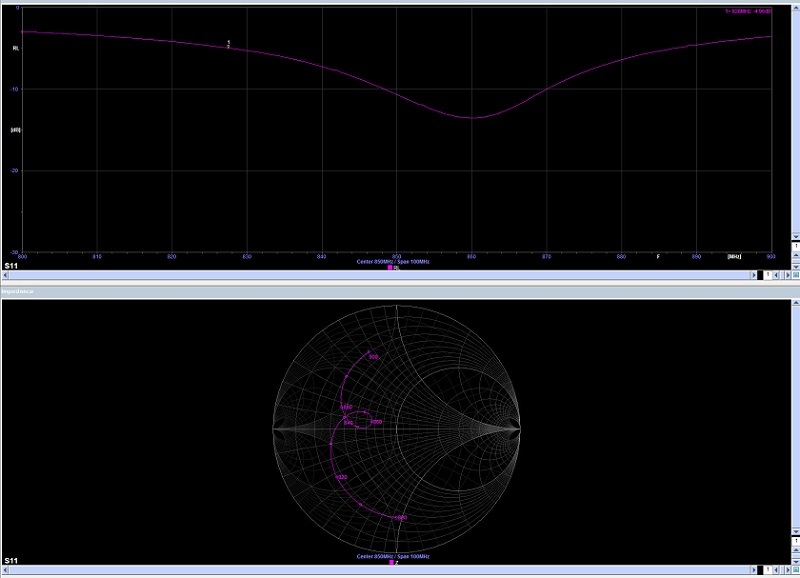
It is not that visible due to small numbers, but the dip is at 860 MHz and had a 13dB return loss. The bottom diagram shows the impedance: The horizontal center line is a pure reactive impedance so the antenna acts almost as a pure resistor (which is good).
Moving the feed point to 9mm shifts the frequency at which the return loss is optimal towards 865 MHz but the impedance stays almost the same (only around a different center frequency)
These measurements were made with the plain antenna, not mounted in the PVC tube. Placing the antenna inside the tube results in a drop of the frequency of the antenna. This is due to the influence of the plastic around the antenna on the velocity factor. After recalculation I end up with a velocity factor of 0.93 resulting in 24.1 and 8.0 cm for the legs of the antenna.
I tuned the feed point (with the PVC pipe attached) and ended up with the feed point at 10mm. Moving the feed points a little bit does not change the behavior of the antenna that much. It stays somewhere between 15 and 21dB but 10mm seems optimal:
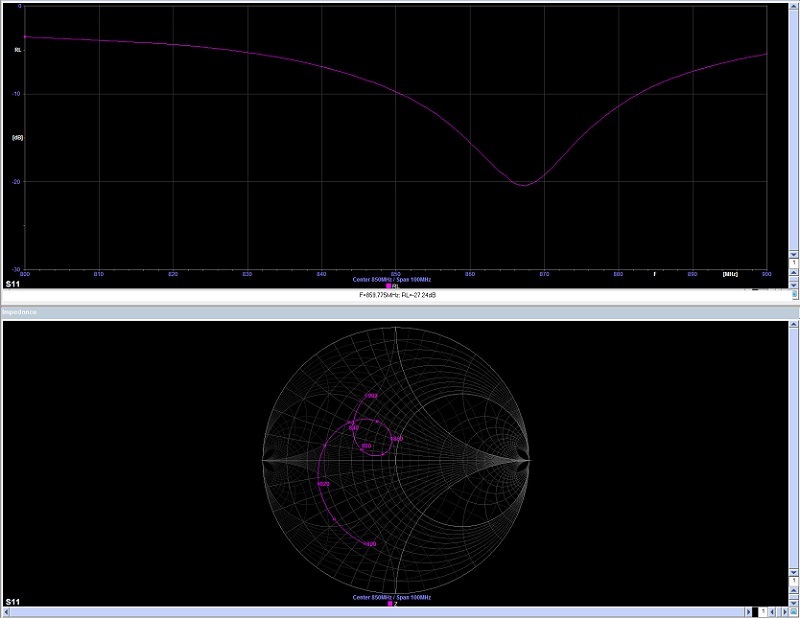
As a comparison I did some measurements on the “John Deer” antenna that’s being sold by a number of shops:
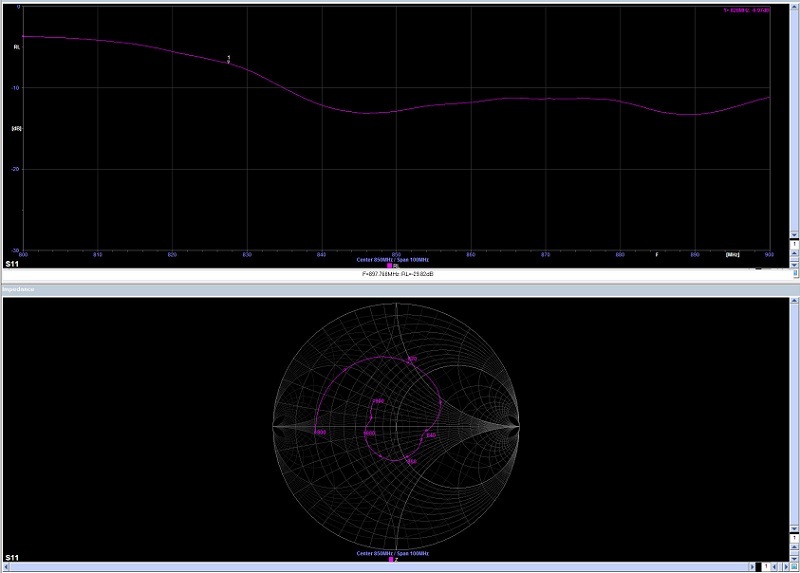
This is a dual band 868/915 antenna with 9dBi gain. The return loss is (at 13dB) a bit worse than with the J-pole but still not that bad. With a 5% power return loss instead of 1% is still good. With the small powers of a LoRa tranceiver it still won’t damage your equipment.
So I’m happy with the results. The antenna length is not that critical (+/- 1mm does not change the antenna that much) and placing the feed point at the right place is easy.
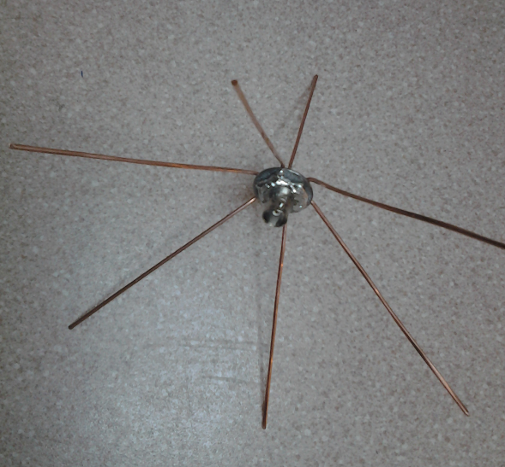


 ?
?

